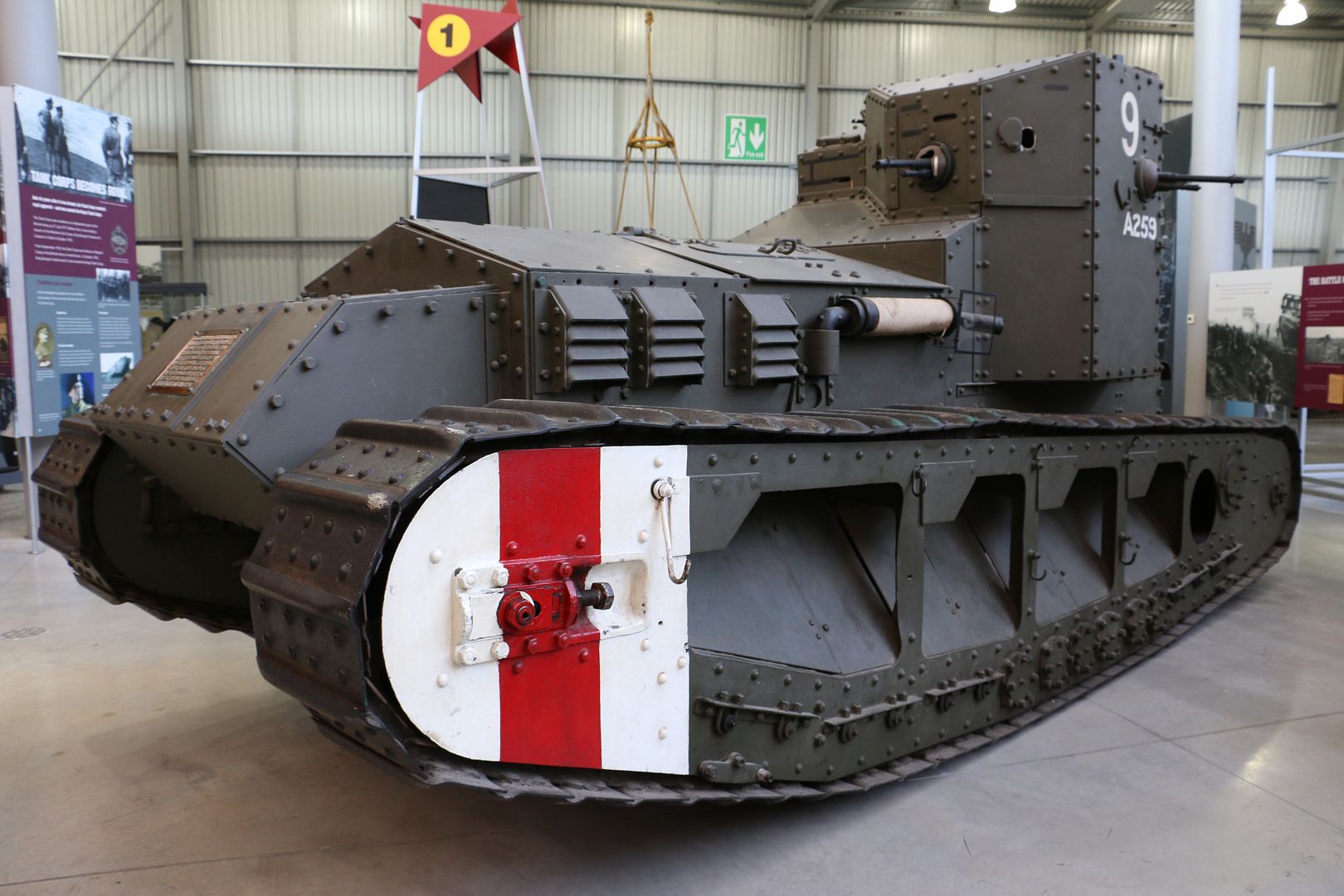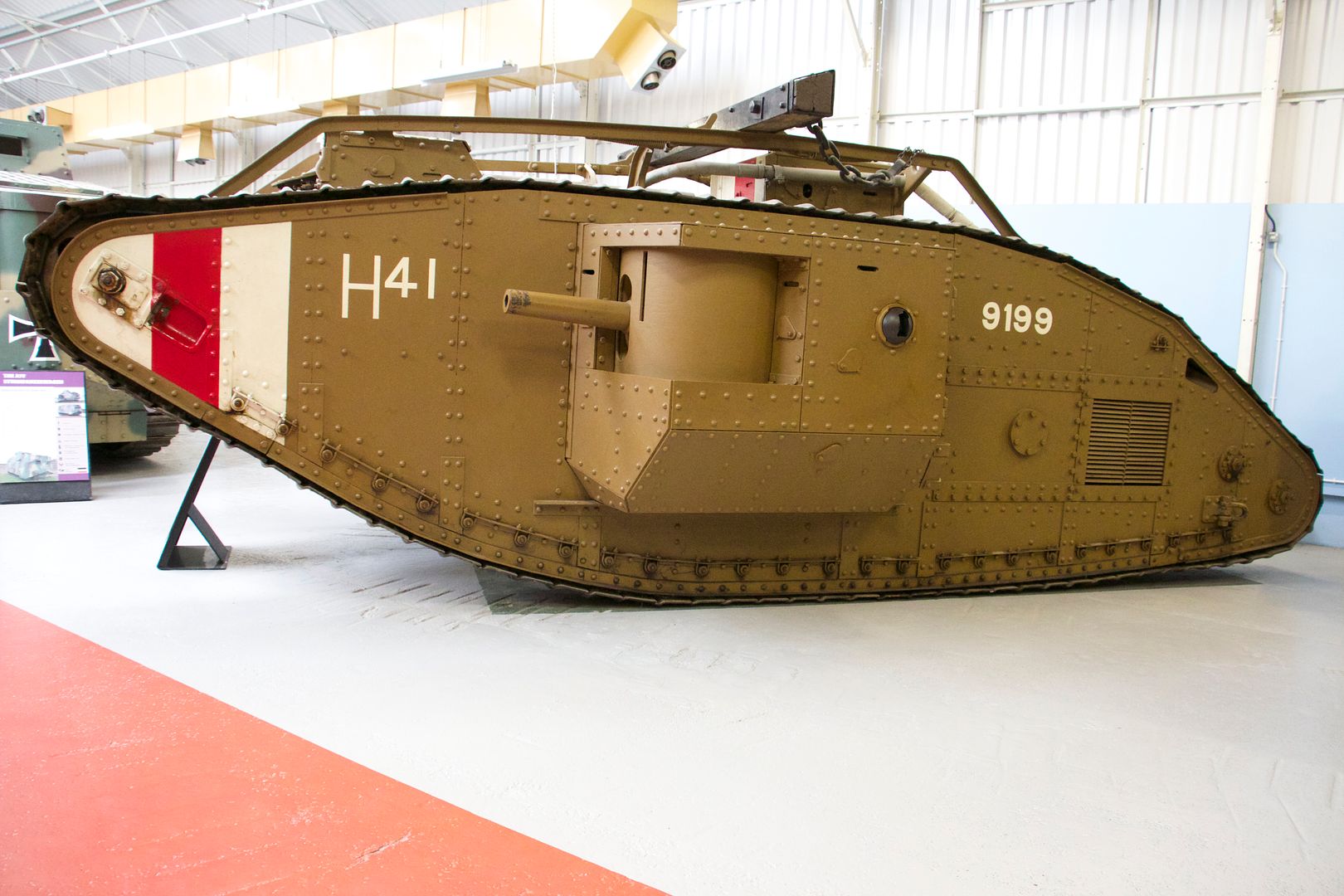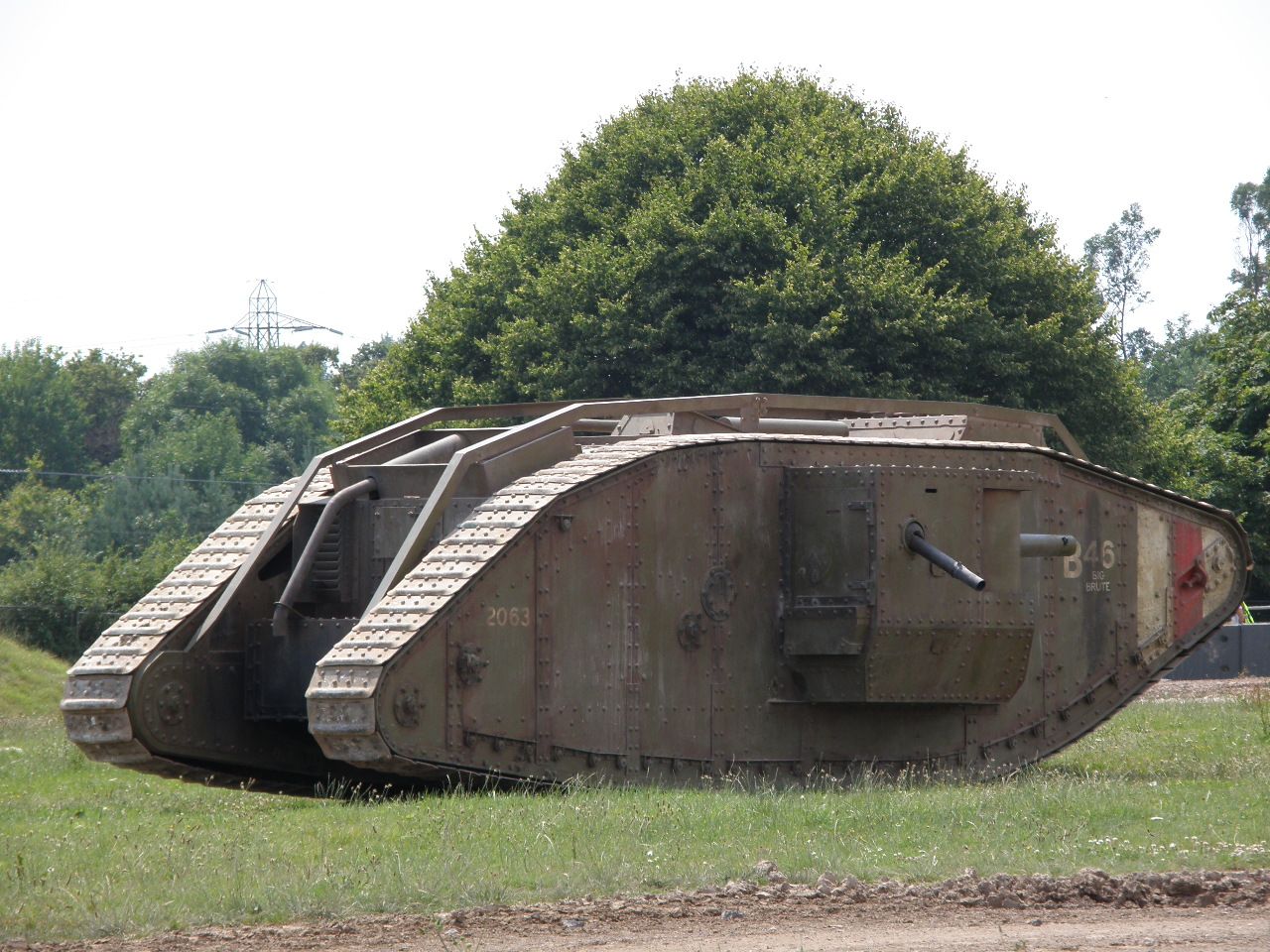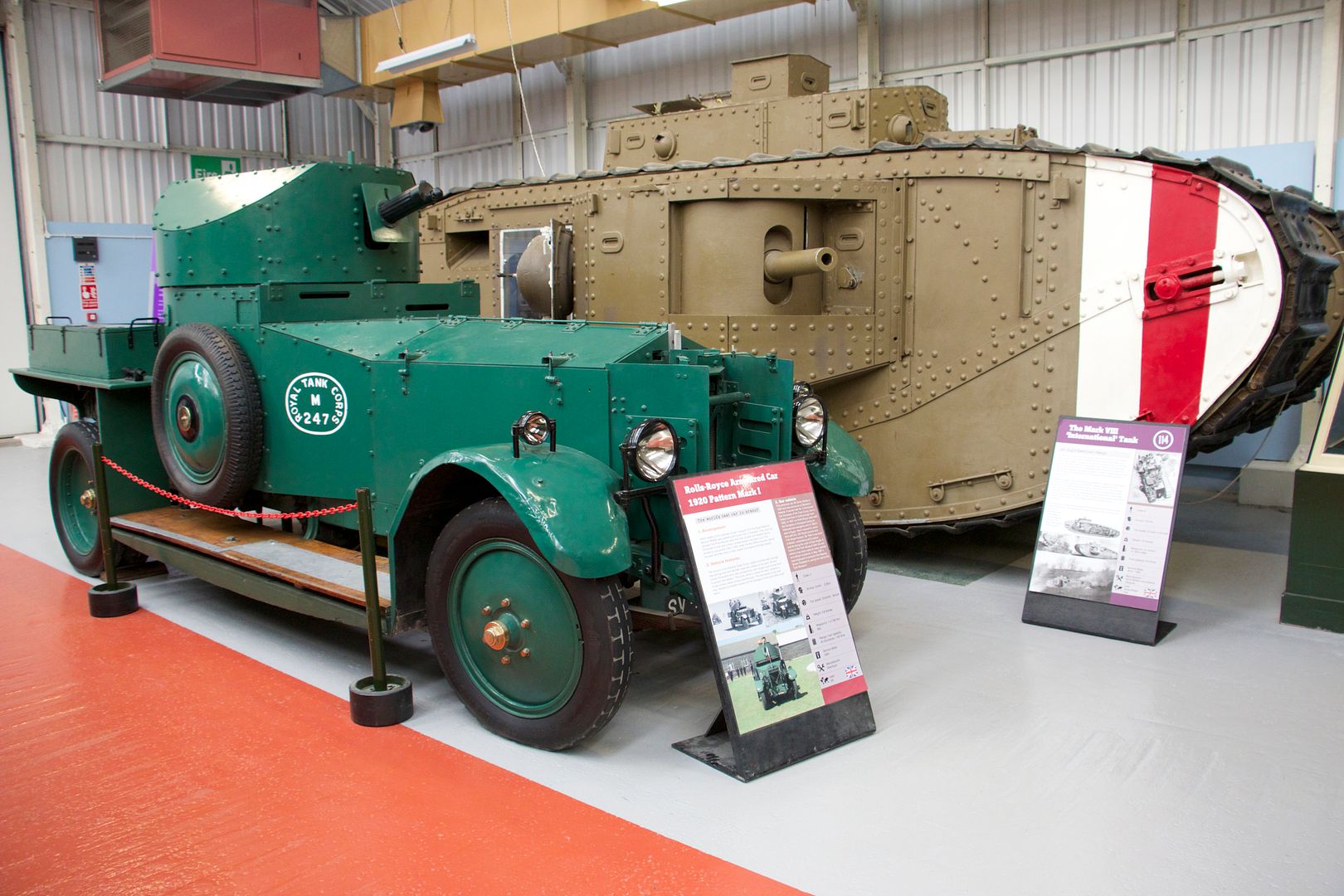|
|
Post by planecrazy on Oct 4, 2016 16:51:54 GMT 12
A few of those WW I land ships taken at Bovington in 2014.   This one went for a run during my visit, actually a replica, used in the movie War horse, from memory was donated by Peter Jackson to the museum after the film was wrapped.   |
|
|
|
Post by Bruce on Oct 4, 2016 17:26:02 GMT 12
Warhorse wasnt a Peter Jackson Film, it was Steven Spielberg. Although PJ has some WWI tank replicas, they are a bit different mechanically to this one (And significant different to the originals)
Heres a video on how the Warhorse Mk IV was made:
|
|
|
|
Post by planecrazy on Oct 4, 2016 19:11:37 GMT 12
Woops, my mal, as i said from memory, did Peter Jackson's people share
ideas with Steven Spielberg's people make the tanks for War horse?
|
|
|
|
Post by AussieBob on Oct 4, 2016 21:23:00 GMT 12
Some fascinating info and topic there Dave.
One curious question - why are some tanks female and some male ?
"Aristotle II IV
20-Nov-17 – A Bttn, 2 Coy, 5 sec, A24 Lt Rodgers JR - In action. Hit and burnt out at Marcoing W23 behind German lines. W1a
Later recovered to Marcoing railway station by the British. A male tank. X11.111
Note: Mistakenly given serial number 2025 on Battle history sheet. 2025 is Arethusa's number."
and meanwhile
"Britannia IV
A Mk IV female tank which undertook a war bonds tour of the USA; not 2561 or 2668."
Is it that the male tank has a barrel ?
|
|
|
|
Post by ErrolC on Oct 4, 2016 21:38:41 GMT 12
Male (British) tanks were armed with guns (naval 6-pounders from memory), while females had MGs.
|
|
|
|
Post by nuuumannn on Oct 13, 2019 13:52:59 GMT 12
I took a look through this list today, fascinating stuff. I was interested in this section on the NZ Div being supported by four tanks during its assault on Flers in September 1916. I had read that there were four tanks supporting the Kiwis advance and this confirms it. sites.google.com/site/landships/home/narratives/somme1916narratives/15-september-1916---supporting-the-new-zealand-divisionHere is a picture taken from the NZ Somme Memorial at Longueval, which was the approximate starting point of the NZ Div's advance. On their right they were supported by the 14th Div, which also had tanks as next to Longueval, which the Kiwis had taken earlier in the week from Caterpillar Wood, there was a tank Depot. To the right of the water tower and poplars hidden behind the bushes is Flers, with the row of bushes at centre right being Switch Trench, which, along with two other German defensive positions, the Div captured in bitter hand-to-hand fighting. Their ultimate goal was Factory Corner to the north of Flers. This was the first set-piece attack that the Div was involved in, having been based at Armentiers to begin with, but being brought down to the Somme region to take part in the battle of Flers-Courcellette.  Great War Tour 42 Great War Tour 42Allegedly, once Flers had been captured, one of the tanks drove along the main street with British soldiers following behind it, cheering and waving. When the Kiwis attacked the German trenches at Grevillers in 1918, they were being supported by Whippets. They were by this time part of the drive through the German strong points as part of the 100 Days Offensive from July/August 1918, which was a steady dash across the northern French countryside. This was not the usual going 'over the top' from trenches to trenches, but true mobile warfare, with the Commonwealth troops driving toward each town captured by the Germans and pushing them backwards from each defensive position to the next. Their goal was the breeching of the Hindenburg Line at Havrincourt, and after reaching Bapaume, the Kiwis then advanced against Bancourt, which they took after the Germans retreated to their trenches on the road between Bancourt and Fremicourt, only about a kilometre apart. The Bapaume town hall, that, in March 1917 had been blown up by a mine buried below it left by the Germans. 30 Australian troops and two French civilians were killed in the blast that could be seen in the local villages.  Great War Tour 43 Great War Tour 43 Outside of Bancourt, only a few kilometres away from Bapaume is where the A7Vs were sent into battle against the Kiwis, four of them, which caused the Kiwis some consternation as although they had advanced with tanks in support before, they had never faced them in combat, which would have been daunting for anyone in that situation. In the murk of battle however, the German gunners fired on their own tanks, thinking they were British, two of them, 'Schnuck' and 'Hagen' were disabled and slid down a bank outside of Fremicourt. they were both captured by the New Zealanders. Both tanks were later scrapped, but one of Schnuck's Maxim Nordenfelt guns survives at IWM North, Manchester. This drive eastwards took the Kiwis against very experienced and capable German troops at Trescault Ridge on the far side of Havrincourt, which was bloody, the Kiwis having to drop back to Bapaume for some r & r, but they then went forward to the Nord Canal, where the Canadians were launching an offensive, as Nord was a strong point incorporated into the Hindenburg Line defences. This is the point where the Kiwis reached the Nord Canal and built a single span bridge across the canal - the concrete base to the right of the bridge is where the New Zealand bridge was. It remained in place for some time afterwards as the only means of crossing the canal between Hermies and Havrincourt.  Great War Tour 44 Great War Tour 44 Tanks were used in all these advances by the British, including at Bancourt, but the Kiwis did not usually have tanks accompanying them all the way, unless they were in support of a British unit. Of course, once the Kiwis crossed the canal, not to be confused with the Scheldt Canal, which again they were able to cross successfully, they crossed the countryside around Cambrai in October, around the time of the 2nd Battle of Cambrai and prepared for the battle of Sambre, and the taking of Le Quesnoy on 4 November. British tanks helped take the forest at Morval, which during the Battle of Sambre was one of the Kiwi objectives as well as the capture of Le Quesnoy. From August to November, the NZ troops had covered around 73 kilometres distance, a considerable advance bearing in mind the static nature of warfare throughout the most of the Western Front campaigns. I digress... This is Firefly, a Whippet that was involved in the 2nd Battle of Cambrai in early October 1918 during the 100 Days Offensive. It is on display at the big military museum in Brussels.  Firefly Firefly |
|